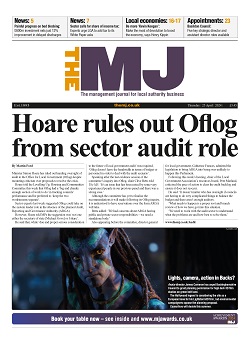Innovation is a word used fairly liberally in the world today. It can mean different things to different people; one person’s ‘innovation’ is not necessarily another’s. To some, it can mean introducing breakthrough ideas around service and to others it can be more a tweaking around the edges of existing services to improve delivery or value. Google’s Ngram Viewer, which tracks the usage of words, shows the term innovation started to explode around the mid-1950’s, perhaps as a result of manufacturing and computing advances and, more importantly, the adoption of new ideas to a generation hungry for change.
Amid the well documented challenges facing local authorities, from financial constraints, and demographic shifts to increased public expectations, what is the role for innovation? It surely emerges as one of the most valuable tools for addressing these challenges. By encouraging creativity, adaptability, and efficiency in public service delivery, innovation empowers councils to serve and support their communities better. To do more with less. Whether it’s simplifying processes, introducing sustainable initiatives, or improving citizen engagement through digital platforms, innovative practices drive positive change.
So, what are the practical strategies for identifying leaders who can foster a culture that encourages innovation and creativity within their teams, and how do you identify it during executive search processes? What are the likely traits of those who will introduce new ways of delivering a service, solve a problem or improve an outcome through a change in process, the application of new technology or a new approach? Critically, for it to be truly innovative, it has to have transformative impact.
During an executive search process it is important to look for those characteristics and behaviours most closely aligned to innovation. A forward-thinking outlook is a good starting point. These leaders should be capable of anticipating future community needs and devising proactive strategies to meet them before need occurs.
They should demonstrate adaptability, navigate challenges with flexibility and embrace emerging technologies. It is crucial to encourage collaboration within their teams and the wider systems in which they operate, and promote an environment of openness, teamwork, and knowledge sharing. Additionally, they should be willing to take calculated risks and prioritise achieving measurable impact, steering innovation towards tangible outcomes.
Beyond identifying suitable candidates, fostering a culture of innovation within the organisation is equally important. Providing support, resources, and incentives for creative thinking and experimentation creates an environment conducive to innovation. Encouraging collaboration across departments, establishing space for more creative thinking, and recognising and rewarding innovative initiatives are key elements in cultivating a dynamic culture of innovation.
Our own data yields some interesting insights into innovation and leaders in local government. Our Altitude leadership model measures the critical behaviours required for success in public sector leadership roles. Comparing more than 1,000 local government leaders with their peers across the wider public sector shows a key strength among those applying for senior roles in local government when applying our Tackle Tomorrow competency; this suggests a particular strength around driving transformation, balancing risk and innovation.
Interestingly though, that same data indicates a potential weakness with regard to being Curious and Agile – being adaptable, responsive, flexible and hungry to learn.
This appears to indicate a strength around handling change and transformation in a strategic, forward-looking sense, but potential for enhancement of individual openness and flexibility, suggesting the leaders themselves are not likely to be innovative and actively seek new ways of doing things. This presents questions as to how they can best be a role model and create an environment where curiosity, learning and creativity are encouraged.
To create a more curious and creative culture, investment in continuous learning and development opportunities is essential to nurture these skills and mindset to innovate and adopt change at all levels across the organisation. Training programs focusing on design thinking, agile methodologies, and emerging technologies equip employees with the tools and confidence to drive innovation in their roles. Attitudes to risk also need to be considered, which is more difficult during this period of fiscal challenge across the sector.
Innovation is not just the remit of leadership, of course, with staff closest to the frontline often generating the best ideas as they witness the issues and challenges up close. Therefore, cultivating a culture that instils confidence in all staff to engage, voice their opinions and, critically, allows the best ideas to be developed is central to a more innovative environment.
When considering candidates, elicit more tangible evidence of implementing change and innovation throughout your assessment. Focus on how innovation was adopted and what were the outcomes. I have heard numerous instances wherein such practices led to cost reductions in temporary accommodation or the establishment of new funding mechanisms enabling refugees to re-qualify in their pre-migration professions.
Evidencing examples, perhaps via a more competency-led initial assessment of candidates can be a good way to objectively assess innovative talent. You can also consider more innovative application processes. We have successfully used video supporting statements where we wanted a more inclusive and personal way for applicants to present their competencies.
Using bespoke assessment designed to assess collaboration, appetite for risk and early adoption of new techniques are also effective in being able to measure what can otherwise be an elusive characteristic. Through thoughtful leadership recruitment and efforts to focus on an innovative mindset and leadership style, we can help councils identify leaders who will help their teams find new ideas and ways of working.
Ben Parsonage is a senior consultant with GatenbySanderson’s local government practice
ben.parsonage@gatenbysanderson.com
This article is sponsored content for The MJ



